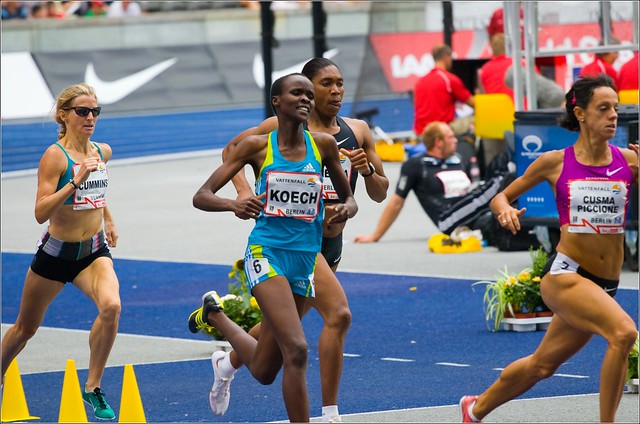
Last month, the International Association of Athletics Federations (IAAF) ruled against Caster Semenya, a two-time Olympic champion from South Africa who challenged rules prohibiting women with naturally high levels of testosterone from competing The court’s ruling declares that female track athletes with naturally elevated levels of testosterone must reduce these hormones before they can participate in certain races at major competitions.
Madeleine Pape, a former Australian Olympian who has raced against Semenya and a Ph.D. candidate in sociology, told The New York Times that athletes should be allowed to compete based on their preferred gender:
I’m not saying it’s a solution, but I think it’s a start…I think it’s hard to draw a biological line around the female athlete category.”
She believes the court ruling is based primarily on
“People’s fears and misconceptions about trans women competing…I want to make sure people understand the complexities [of gender categories] and relate to these women as real people.”
While there have been broader shifts in cultural acceptance of transgender people and deconstructing gender categories, sports organizations tend to draw hard lines between men and women. According to law professor Doriane Lambelet Coleman:
“The gender studies folks have spent the last 20 years deconstructing sex and all of a sudden they’re facing an institution with an entirely opposite story…We have to ask, ‘Is respecting gender identity more important or is seeing female bodies on the podium more important?’”

Comments 7
Glire — June 13, 2019
Caster Semenya's body *is* a female body. Biologically, socially, and every other way. Because of the way HRT activates certain genes in the DNA of everyone on earth, it's arguable that trans women's bodies are female bodies as well, biologically and otherwise. The idea of "respecting gender identity" versus "seeing female bodies on the podium" is a false dichotomy that assumes that all female bodies look the same way.
ghd sports — July 16, 2019
It was great event and thank you IAAF for a create this event. Now you can watch more sports events live on GHD SPORTS for free of coast and thank you...............
gomax tv — July 16, 2019
It was great info for affirming gender - go max tv
MySainsburys — July 6, 2021
Thank you for posting that it could be just the thing to give inspiration to someone who needs it! Keep up the great work!
discountsau — May 12, 2022
what an amazing and fabulous nice article Visit Promotiecode
discountsau — May 12, 2022
“People’s fears and misconceptions about trans women competing…I want to make sure people understand the complexities [of gender categories] and relate to these women as real people.” coupons code
stoneunder — June 5, 2023
Have you ever asked how to plant an orange tree in your personal garden, though, as a gardener? Is it difficult? What is required? Is it even possible where you are? Pomegranate